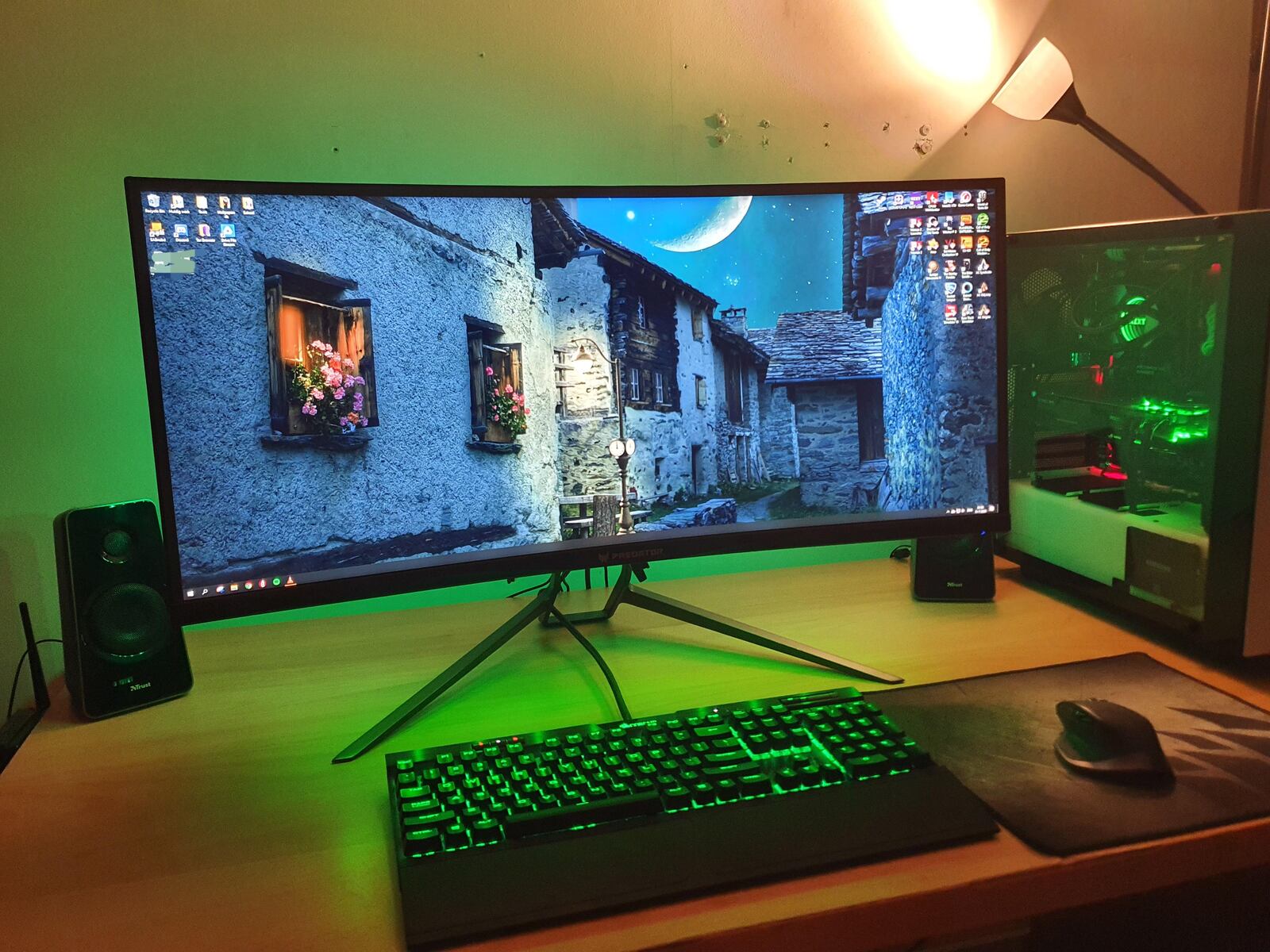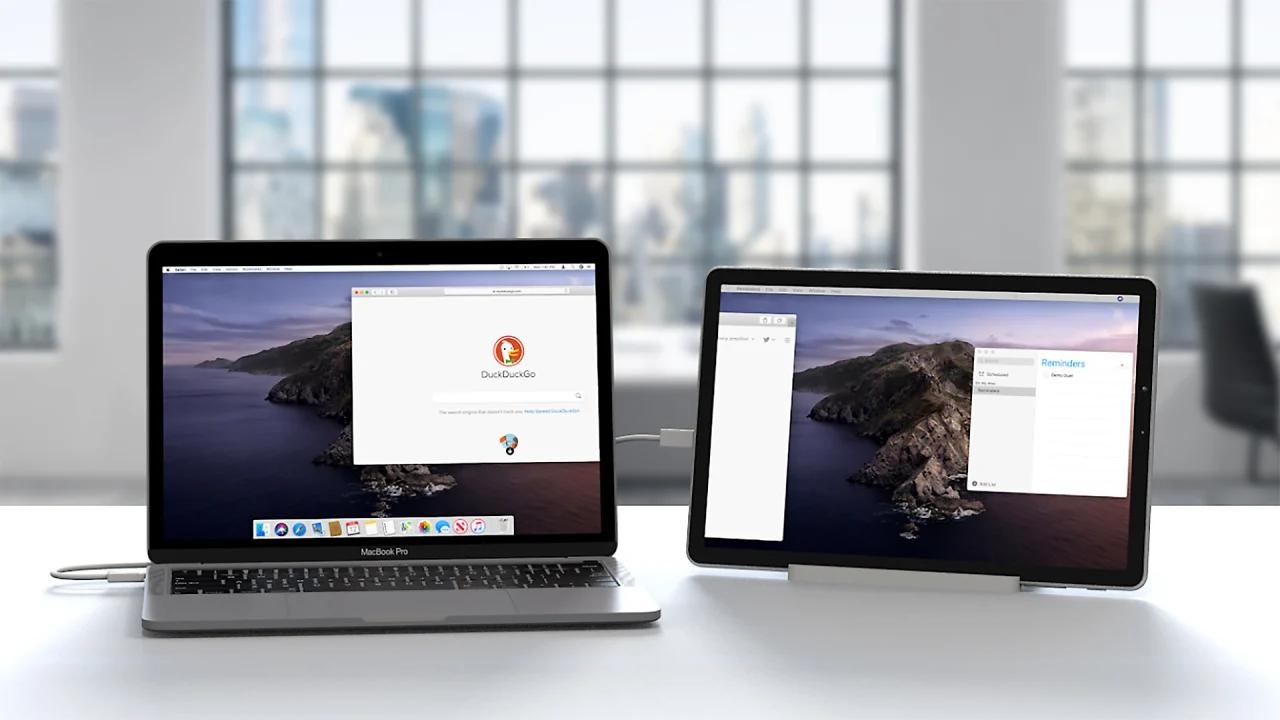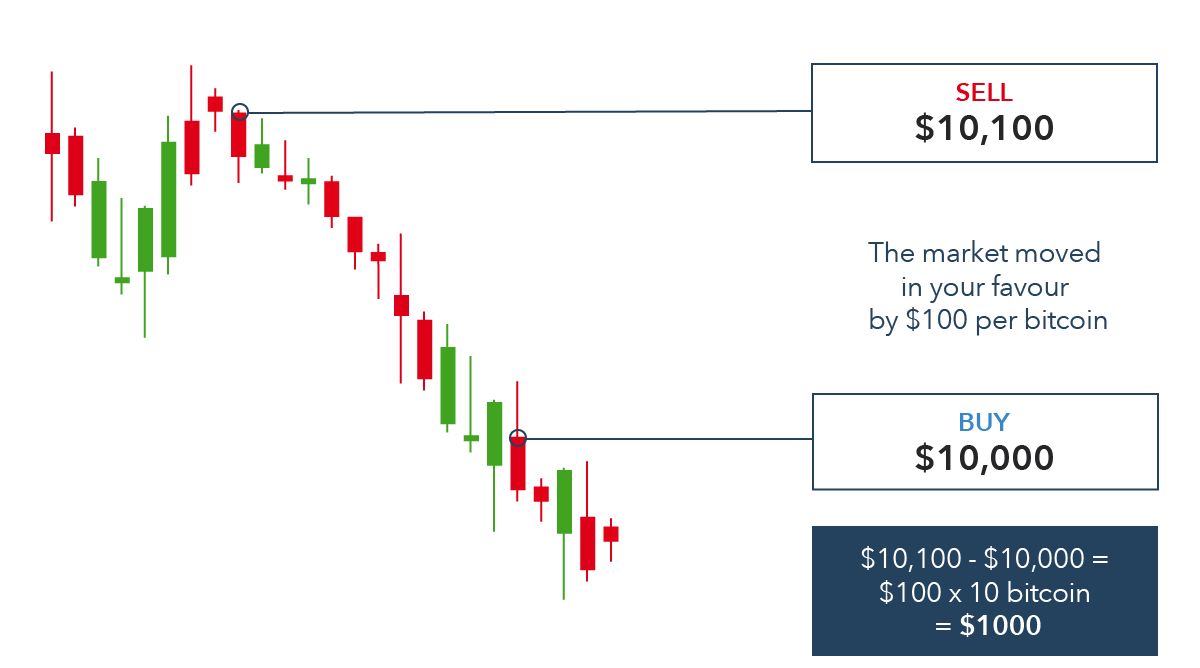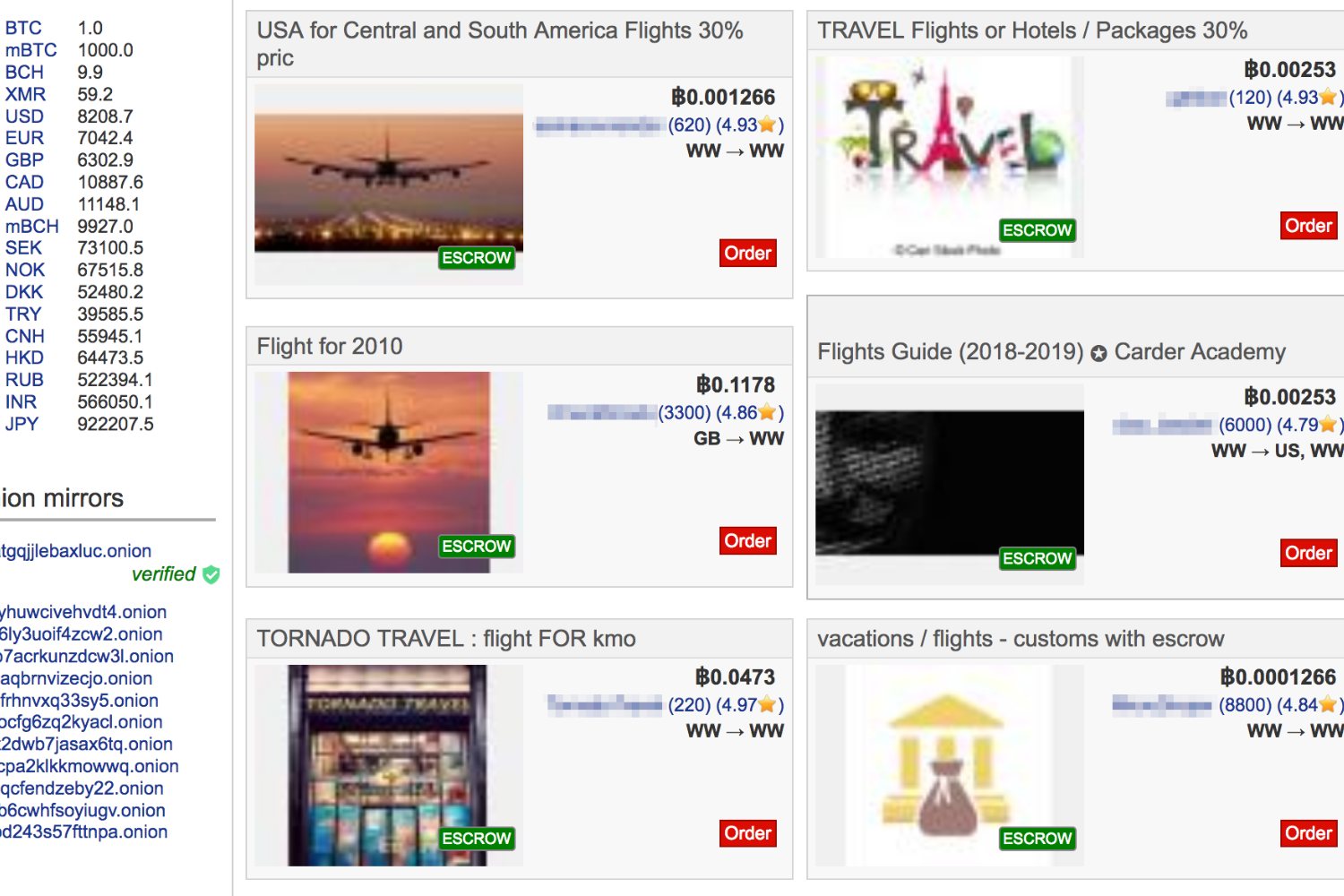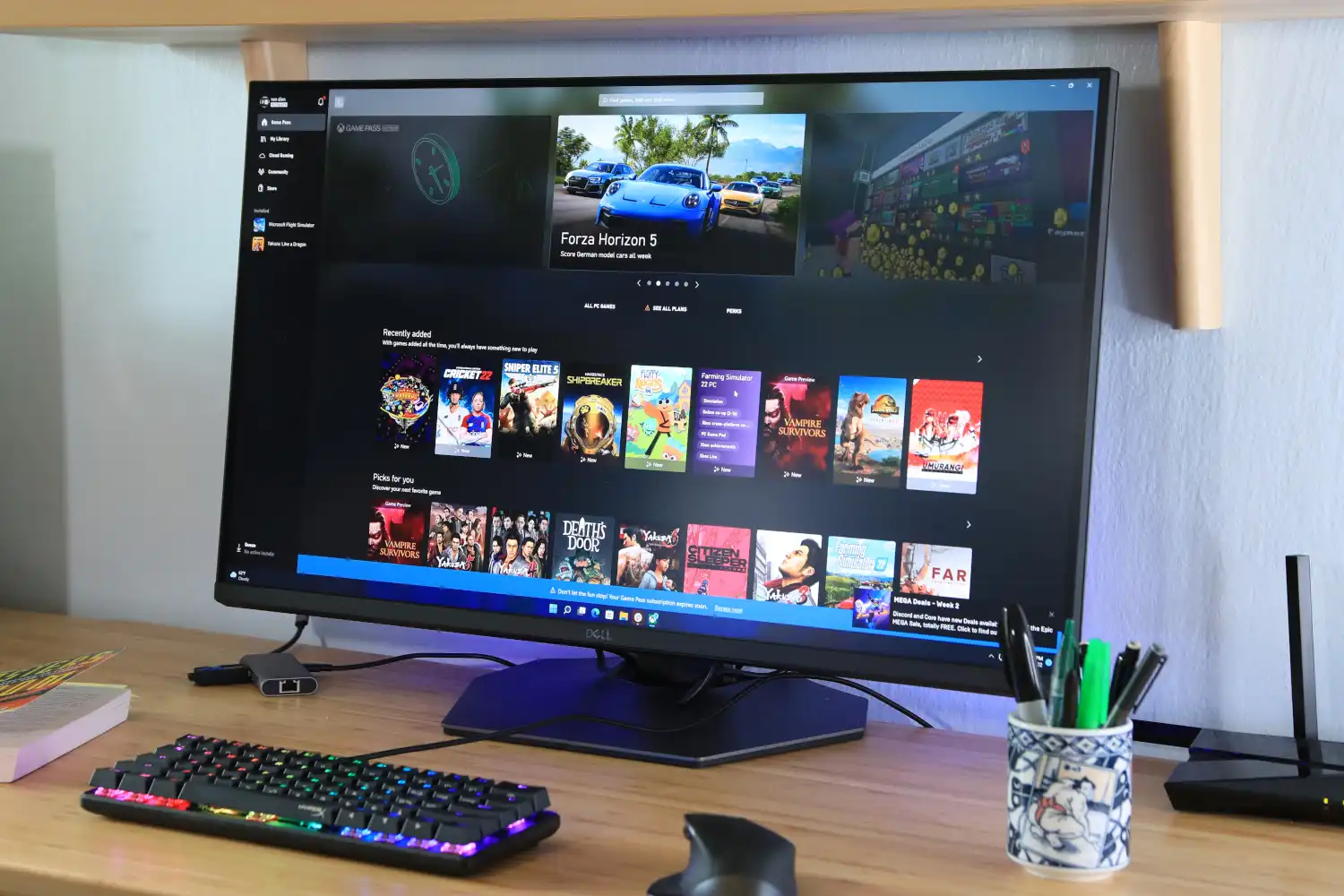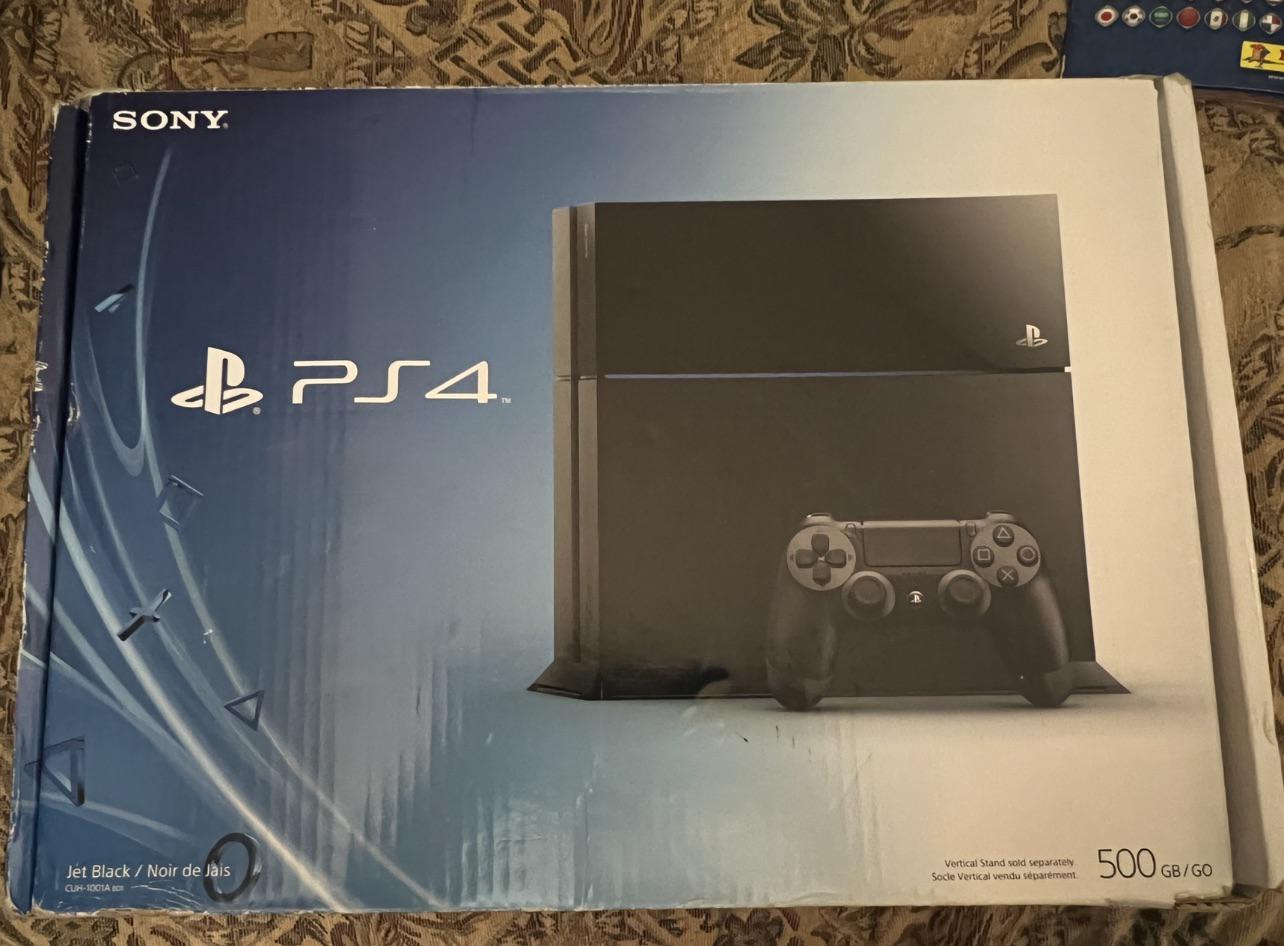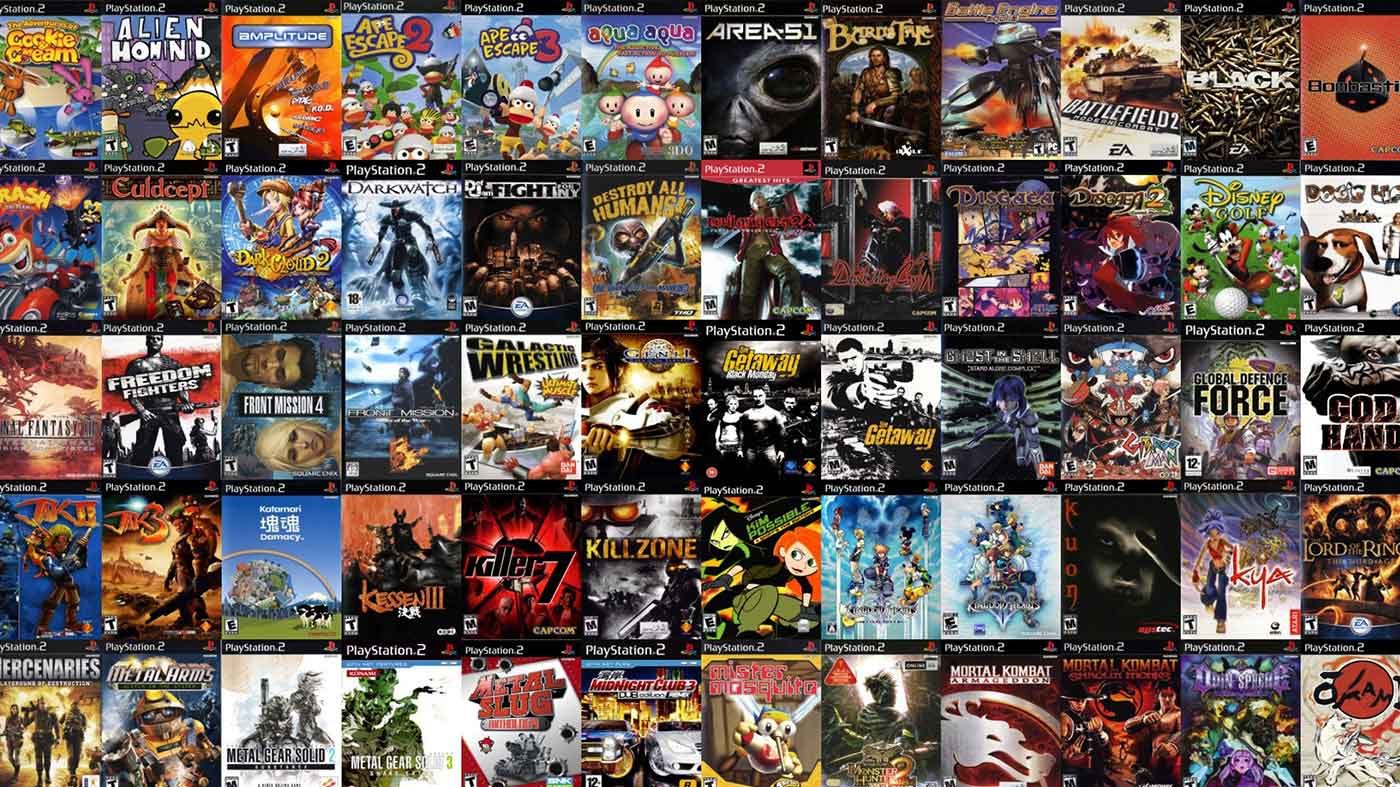Introduction
Are you looking to sell your gaming monitor but not sure where to start? Whether you’re upgrading to a new model or simply need some extra cash, selling your gaming monitor can be a great way to declutter and make some money in the process. However, in order to get the best price and attract potential buyers, there are several important steps you need to consider.
In this guide, we’ll walk you through the process of selling your gaming monitor, from understanding its value to packaging and shipping it to the buyer. By following these steps, you can ensure a smooth and successful selling experience.
First and foremost, it’s crucial to have a clear understanding of your gaming monitor. This includes its specifications, condition, and any additional features it may have. Knowing this information will not only help you accurately describe your monitor to potential buyers but also set a competitive price.
Once you have a good grasp of your monitor, the next step is to determine its market value. Conduct research on similar models being sold online, taking into account factors such as age, condition, and brand reputation. This will give you a better idea of how much you can reasonably expect to sell your gaming monitor for.
As you prepare to sell your gaming monitor, it’s important to gather all necessary documentation, including warranty information, receipts, and any other relevant paperwork. This will help build trust with potential buyers and provide them with additional peace of mind.
Before listing your gaming monitor for sale, take the time to clean and prepare it. Remove any dust or dirt, polish the screen, and ensure all cables and connections are in working order. A well-maintained and presentable monitor is more likely to attract buyers and fetch a higher price.
Choosing the right selling platform is another crucial step in the selling process. Consider popular online marketplaces, specialized gaming forums, or local classified ads depending on your target audience and the level of convenience you desire.
Once you’ve selected a selling platform, it’s time to create a compelling listing. Highlight the key features and specifications of your gaming monitor, share high-quality photos, and include a detailed description. Remember to use descriptive language that appeals to potential buyers and sets your listing apart from the competition.
Setting a competitive price is vital to attracting buyers. Take into account the market value, condition, and demand for your gaming monitor when determining the price. Consider pricing it slightly below market value to generate more interest, especially if you’re looking for a quick sale.
When communicating with potential buyers, be prompt and professional in your responses. Answer any questions they may have and provide additional photos or information if needed. Building a positive relationship with buyers can increase the likelihood of a successful sale and positive feedback.
Negotiations are a common part of the selling process, so be prepared to negotiate on the price or other terms of the sale. Be flexible and open to reasonable offers while also ensuring that your own bottom line is met.
Once you’ve finalized a sale, it’s time to package and ship your gaming monitor. Use appropriate packaging materials to protect it during transit and choose a reliable shipping method to ensure its safe arrival. Provide the buyer with tracking information and follow up to ensure a smooth delivery.
By following these steps, you can successfully sell your gaming monitor and enjoy a hassle-free selling experience. So, without further ado, let’s dive into the details of each step to maximize your chances of selling your gaming monitor quickly and at the best price.
Step 1: Understand your gaming monitor
In order to effectively sell your gaming monitor, it’s essential to have a clear understanding of its specifications, condition, and any additional features it may possess. This knowledge will not only help you accurately describe your monitor to potential buyers but also enable you to set a competitive price. Here’s what you need to consider:
1. Specifications: Familiarize yourself with the technical specifications of your gaming monitor. This includes details such as the screen size, resolution, aspect ratio, refresh rate, response time, and connectivity options. Understanding these specifications will allow you to effectively communicate the capabilities and performance of your monitor to potential buyers.
2. Condition: Evaluate the overall condition of your gaming monitor. Note any scratches, dents, or other physical defects that may affect its appearance or functionality. Be honest about any issues and include them in your description, as transparency is key to building trust with buyers.
3. Additional Features: Identify any unique or additional features that your gaming monitor may offer. This could include built-in speakers, adjustable stand, gaming-specific modes, or compatibility with specific technologies like HDR or G-Sync. Highlighting these features can make your monitor more appealing to potential buyers who are seeking specific functionalities.
By thoroughly understanding the specifications, condition, and additional features of your gaming monitor, you will be equipped to create an accurate and compelling listing that accurately represents your product and attracts interested buyers.
In addition to understanding your gaming monitor, it can be helpful to research and gather supporting information such as the original product manual, a copy of the warranty, and any relevant receipts. Having these documents readily available can provide potential buyers with more confidence and peace of mind when considering your monitor.
Furthermore, you may also want to consider conducting a thorough performance test of your gaming monitor. This can involve checking for dead pixels, verifying color accuracy, and ensuring that all ports and buttons are functioning correctly. Knowing that your monitor is in good working condition will give buyers greater confidence in their purchase.
Overall, taking the time to understand your gaming monitor and gathering all relevant information will help you present an accurate and enticing description to potential buyers. This will contribute to a smoother selling process and increase the chances of achieving a satisfactory sale.
Step 2: Determine the market value
In order to sell your gaming monitor at a fair and competitive price, it’s essential to determine its market value. By researching the prices of similar models being sold online, you can get a better understanding of the current market trends and how much buyers are willing to pay. Here are some key considerations to help you determine the market value:
1. Research Online: Visit reputable online marketplaces, gaming forums, and electronics retailers to find listings for gaming monitors similar to yours. Take note of the prices at which these monitors are being sold, ensuring to compare models with similar specifications, condition, and age as your own.
2. Analyze Completed Listings: Look for completed listings on these platforms to see what gaming monitors have actually sold for recently. This will give you a more accurate picture of the market value, as it reflects the prices that buyers are willing to pay.
3. Consider Demand and Supply: Assess the demand and supply for your specific gaming monitor model. If it’s a highly sought-after or rare model, you might have more flexibility in setting a higher price. Conversely, if there are many similar monitors available in the market, you may need to competitively price yours to attract potential buyers.
4. Factor in Age and Condition: Take into account the age and condition of your gaming monitor. Older monitors or those with noticeable wear and tear may not command the same price as brand new or pristine models. Adjust the market value based on these factors accordingly.
5. Be Realistic: While it’s natural to want the highest possible price for your gaming monitor, it’s important to be realistic and understand the market value. Setting a price that is significantly above market value may deter potential buyers. Consider pricing your gaming monitor competitively to generate more interest and increase your chances of a successful sale.
By carefully researching the market value of your gaming monitor and considering the factors mentioned above, you can confidently determine an appropriate price. Remember, finding the right balance between a fair price and attracting potential buyers is key to a successful sale.
Keep in mind that market values may change over time, so it’s a good idea to periodically check and adjust your pricing strategy accordingly. By staying informed and adaptable, you can ensure that your gaming monitor is priced competitively and sell it with confidence.
Step 3: Gather all necessary documentation
Before selling your gaming monitor, it’s important to gather all the necessary documentation to provide potential buyers with confidence and peace of mind. Proper documentation can also help streamline the selling process and protect you as the seller. Here’s a checklist of important documents to gather:
1. Product Manual: Locate the original product manual that came with your gaming monitor. This manual contains important information about the monitor’s specifications, features, and maintenance guidelines. Including the manual in your listing can be helpful for potential buyers who want to familiarize themselves with the product before making a purchase.
2. Warranty Information: If your gaming monitor is still covered under warranty, gather the warranty information. This includes any registration cards, proof of purchase, or documentation from the manufacturer. Having warranty details readily available can significantly boost a buyer’s confidence in the purchase.
3. Receipts and Proof of Purchase: Collect any receipts or proof of purchase that you have for the gaming monitor. These documents serve as evidence of ownership and can validate the authenticity of the product. Potential buyers may request this information to ensure they are purchasing a legitimate and legally owned item.
4. Accessories and Extras: If you are including any additional accessories or extras with the gaming monitor, gather the documentation related to those items as well. This can include receipts, warranty information, or user manuals for items such as cables, stands, or other peripherals.
5. Repair and Service History: If your gaming monitor has undergone any repairs or servicing, it’s beneficial to compile a record of its repair history. This can include invoices, work orders, or any communication with the repair professionals. Buyers will appreciate transparency regarding any past repairs or maintenance performed on the monitor.
Having all the necessary documentation organized and readily available demonstrates professionalism as a seller and instills trust in potential buyers. It shows that you have taken care of the gaming monitor and have the necessary paperwork to support its authenticity and value.
When creating your listing, mention the availability of these documents and any relevant details. This will provide potential buyers with additional peace of mind, giving them confidence in their decision to purchase from you.
Remember, failing to provide accurate and complete documentation can lead to a distrustful transaction or potential complaints from buyers. By being proactive and gathering all the necessary documentation, you can ensure a smoother selling process and foster more trust with potential buyers.
Step 4: Clean and prepare the monitor for sale
Before listing your gaming monitor for sale, it’s crucial to clean and prepare it to make a positive impression on potential buyers. A well-maintained and presentable monitor not only increases its visual appeal but also hints at the overall care and attention to detail you’ve given it. Here are some important steps to clean and prepare your gaming monitor for sale:
1. Dusting and Cleaning: Begin by gently dusting the monitor using a soft microfiber cloth. Pay attention to the corners, edges, and any vents where dust tends to accumulate. Next, lightly dampen the cloth with a mixture of water and mild detergent, ensuring not to saturate it. Wipe the screen and the outer casing, removing any smudges or fingerprints. Avoid using harsh chemicals or abrasive materials that may damage the monitor’s surface or anti-glare coating.
2. Cleaning the Cables and Connections: Check the cables and connections attached to the gaming monitor. Ensure they are free from dust and debris. If necessary, use compressed air or a soft brush to clean the ports and connectors. This will ensure that all connections are reliable and in good working order for the buyer’s convenience.
3. Checking for Scratches or Damages: Inspect the monitor closely for any scratches, dents, or other visible damages. Take note of any imperfections and include them in the description of the monitor’s condition. Offering transparency regarding any visible flaws can build trust with potential buyers and prevent unnecessary disputes in the future.
4. Verified Functionality: Double-check that all buttons, settings, and features of the gaming monitor are functioning correctly. If possible, conduct a test to verify the monitor’s capabilities, such as adjusting the brightness, exploring various display modes, or testing the connectivity options. This ensures that the buyer will receive a fully functional monitor and reduces the chances of post-sale issues.
5. Packaging and Accessories: If you are selling the gaming monitor with its original packaging or any additional accessories, ensure they are clean and organized. Dust off the packaging, remove any stickers or labels, and make sure that all included items are accounted for.
By taking the time to clean and prepare your gaming monitor for sale, you not only improve its overall appearance but also demonstrate your professionalism as a seller. Presenting a well-maintained and functional monitor will attract more buyers, potentially leading to a quicker and more successful sale.
When creating your listing, describe the cleaning and preparation steps you’ve taken to give potential buyers confidence in the quality and care you’ve invested in the monitor. Including before-and-after photos can also enhance the visual appeal and showcase the improvement you’ve made.
Remember, first impressions matter, and a clean and well-prepared gaming monitor can go a long way in attracting interested buyers and securing a successful sale.
Step 5: Choose the right selling platform
When selling your gaming monitor, it’s crucial to choose the right selling platform to reach your target audience and maximize your chances of a successful sale. Different platforms offer varying levels of visibility, ease of use, and potential buyer engagement. Here are some factors to consider when selecting the selling platform:
1. Online Marketplaces: Popular online marketplaces such as Amazon, eBay, and Craigslist offer a wide reach and a large user base. These platforms allow you to list your gaming monitor for sale and connect with potential buyers from all over. Keep in mind that these marketplaces may charge fees or require seller verification, so familiarize yourself with the platform-specific terms and policies.
2. Specialized Gaming Forums: Gaming-specific forums or communities can be a great option for selling your gaming monitor. These platforms attract a niche audience of gamers who may be specifically looking for gaming equipment. Engaging with these communities can help you target interested buyers and foster a more personalized selling experience.
3. Local Classified Ads: If you prefer to sell your gaming monitor locally and avoid shipping, consider using local classified ads platforms such as Facebook Marketplace or Craigslist. These platforms allow you to connect with potential buyers in your area, making it convenient for both parties to inspect and exchange the monitor in person.
4. Social Media Groups: Utilize social media platforms like Facebook groups, Reddit communities, or Twitter hashtags that cater to gaming enthusiasts. Engage with these groups and share your listing directly to reach a targeted audience of gamers who might be interested in purchasing your gaming monitor.
5. Direct Sales: If you have a specific target audience or already have interested buyers in mind, you can consider selling your gaming monitor directly through word of mouth, personal networks, or dedicated buy/sell groups. Direct sales can often lead to quicker and hassle-free transactions.
When choosing the right selling platform, consider factors such as the cost involved (if any), the level of buyer protection provided, the platform’s reputation, and the amount of effort required to list and manage the sale. It’s also worth researching the platform’s policies on payment methods, shipping options, and dispute resolution.
Ultimately, the choice of selling platform will depend on your preferences, the target audience you want to reach, and the level of convenience and visibility you desire. Assess the pros and cons of each platform, and select the one that best aligns with your goals as a seller.
Remember, no matter which platform you choose, always provide accurate and detailed information about your gaming monitor to attract potential buyers. Utilize the features and tools offered by the platform to enhance your listing, such as high-quality photos, comprehensive descriptions, and prompt communication with potential buyers.
By selecting the right selling platform, you can maximize your exposure, connect with interested buyers, and increase the chances of a successful sale for your gaming monitor.
Step 6: Create a compelling listing
Creating a compelling listing is crucial to attract potential buyers and stand out in a competitive market. A well-crafted listing will effectively showcase the features and value of your gaming monitor, enticing buyers to consider making a purchase. Here are some key elements to include in your listing:
1. Clear and Descriptive Title: Start with a clear and compelling title that accurately describes your gaming monitor. Include key details such as the brand, model, screen size, and any standout features. This will help potential buyers quickly identify if your monitor matches their requirements.
2. High-Quality Photos: Include high-resolution photos that showcase your gaming monitor from various angles. Ensure the photos accurately represent the condition and appearance of the monitor. Take pictures of the front, back, and side views, and include any unique features or accessories that are included with the monitor. Clear and appealing visuals increase the interest and trust of potential buyers.
3. Detailed Description: Provide a detailed and informative description that highlights the key features, specifications, and condition of your gaming monitor. Mention the screen resolution, refresh rate, response time, connectivity options, and any additional features that make your monitor stand out. Include accurate measurements and dimensions to assist buyers in assessing compatibility with their existing setup.
4. Condition and Usage History: Be transparent about the condition of your gaming monitor. Mention any scratches, dents, or flaws present, as well as the monitor’s usage history. If the monitor has been used primarily for gaming or has had limited usage, mention that in the description to reassure buyers of its overall condition.
5. Pricing and Value: Set a competitive and realistic price based on market research and the condition of your gaming monitor. Highlight any factors that add value to your monitor, such as warranties, proof of purchase, or additional accessories included. Offering a fair price and emphasizing the value buyers will receive helps attract potential buyers and encourages them to make an offer.
6. Clear Terms and Conditions: Clearly outline your terms and conditions, including your preferred payment method, shipping options, handling time, and return policy (if applicable). Be concise and straightforward to avoid any confusion or misunderstandings during the buying process.
7. Positive Reviews and Ratings: If you have previously sold items or received positive feedback on the selling platform, showcase these reviews in your listing. Positive feedback and ratings can build trust and credibility with potential buyers, increasing the likelihood of a successful sale.
8. Engage with Potential Buyers: Be responsive to inquiries and questions from potential buyers. Promptly provide additional information or clarification when requested. Engaging with potential buyers demonstrates your dedication as a seller, addresses any concerns they may have, and encourages them to proceed with the purchase.
9. Use Keywords: Incorporate relevant keywords throughout your listing to improve its visibility in search results. Incorporate phrases that potential buyers may use when searching for gaming monitors, such as “gaming monitor,” “high refresh rate,” or “HD display.”
By creating a compelling listing that effectively communicates the features, value, and condition of your gaming monitor, you will attract more interested buyers and increase the likelihood of a successful sale. Take the time to craft a visually appealing and informative listing to capture the attention and interest of potential buyers.
Step 7: Set a competitive price
Setting a competitive price is crucial when selling your gaming monitor. A well-priced monitor attracts potential buyers, increases the chances of a successful sale, and ensures that you receive a fair value for your item. Here are some factors to consider when determining the price:
1. Market Research: Conduct thorough market research to understand the price range of similar gaming monitors currently being sold. Look for listings with comparable specifications, condition, and age to get an idea of the market value. Consider both online marketplaces and local sources to gather a comprehensive understanding of the price range.
2. Monitor Condition: Assess the condition of your gaming monitor and adjust the price accordingly. A monitor in excellent condition, with minimal wear and tear, may command a higher price compared to one with noticeable scratches or a worn-out appearance. Be transparent about the condition in your listing to manage buyers’ expectations.
3. Age and Model: Take into account the age and model of your gaming monitor. Older models may have depreciated in value, while newer models or limited edition versions may command a higher price. Consider the demand for your specific model and adjust your price accordingly.
4. Additional Features and Accessories: If your gaming monitor has unique or extra features, such as built-in speakers or adjustable stands, or if you are including accessories like cables or mounting brackets, these can add value to your monitor. Use the inclusion of these extras as a selling point when determining a competitive price.
5. Demand and Competition: Consider the level of demand for gaming monitors and the competition in the market. If there is high demand or limited availability for monitors like yours, you may have more flexibility in setting a slightly higher price. However, in a saturated market, pricing your monitor competitively is crucial to attract potential buyers.
6. Be Realistic: While it’s natural to want the highest possible price, it’s important to be realistic. Pricing your gaming monitor too high could deter potential buyers, while setting it too low may undervalue your item. Strike a balance by setting a price that is competitive based on market research, yet fair for the condition and value of your monitor.
7. Room for Negotiation: Consider leaving some room for negotiation. Buyers may try to negotiate down the price, so setting a slightly higher initial price can provide you with some flexibility during the negotiation process. Be prepared to negotiate and find a middle ground that satisfies both parties.
When setting your price, keep in mind that pricing can be subjective and vary based on factors such as location and demand. Adjust your strategy as needed, especially if you’re eager for a quick sale or if your monitor has unique features that make it stand out from the competition.
Remember to clearly communicate the value and features of your gaming monitor in your listing. Use persuasive language and highlight any standout qualities that make your monitor worth the price you’re asking for.
By setting a competitive price that aligns with market trends and the condition of your gaming monitor, you increase the chances of attracting potential buyers and achieving a successful sale.
Step 8: Communicate with potential buyers
Effective communication is key when selling your gaming monitor. It allows you to answer potential buyers’ questions, provide additional information, and build trust throughout the selling process. Here are some essential tips to ensure effective communication with potential buyers:
1. Prompt Responses: Respond to inquiries and messages from potential buyers as quickly as possible. Prompt responses demonstrate your commitment as a seller and show that you’re attentive to their needs. Aim to reply within 24 hours or sooner to maintain a positive line of communication.
2. Be Professional: Maintain a professional tone in your communication with potential buyers. Use proper grammar and spelling, and avoid using slang or informal language. Presenting yourself professionally instills confidence in buyers and establishes credibility.
3. Provide Detailed Information: Answer potential buyers’ questions thoroughly and provide as much information as possible. Be transparent about the condition, specifications, and any other relevant details of your gaming monitor. This helps potential buyers make an informed decision and fosters trust in the accuracy of your listing.
4. Additional Photos or Videos: If a potential buyer requests more visuals or specific details, be willing to provide additional photos or videos. Clear and detailed visuals can give buyers a better understanding of the monitor’s condition and features, increasing their confidence in making a purchase.
5. Friendly and Polite: Maintain a friendly and polite tone throughout your communication. Buyers appreciate sellers who are approachable and accommodating. Be patient and understanding, even if negotiations or discussions become challenging.
6. Negotiation and Flexibility: Be open to negotiations and show flexibility when discussing the price or other terms of the sale. Finding a mutually agreed-upon resolution can help secure the sale without compromising your bottom line.
7. Manage Expectations: Be honest and manage buyers’ expectations regarding shipping times, refund policies, or any potential limitations associated with the sale. Clear communication about any limitations or special conditions can help avoid misunderstandings or disputes later on.
8. Follow Platform Policies: Familiarize yourself with the policies and guidelines of the selling platform you’re using. Adhere to their rules regarding communication, payment, and shipping to ensure a smooth and trouble-free selling experience.
9. Privacy and Safety: Protect your privacy and practice online safety measures when communicating with potential buyers. Be cautious about sharing personal information, and use secure payment methods recommended by the platform to protect both parties involved in the transaction.
10. Close the Sale Gracefully: Once a sale is agreed upon, promptly complete the necessary steps to finalize the transaction. Send clear instructions for payment, confirm shipping details, and provide any other relevant information to ensure a seamless and efficient sale closure.
Remember, effective communication is crucial in creating a positive buying experience. By being responsive, helpful, and professional throughout your interactions, you can build trust, foster buyer confidence, and increase the likelihood of a successful sale.
Step 9: Negotiate and finalize the sale
Negotiating and finalizing the sale of your gaming monitor is a critical step in the selling process. It involves reaching a mutually agreeable price and ironing out any other terms or conditions with the potential buyer. Here are some essential tips to navigate the negotiation and finalization process:
1. Open Communication: Maintain open and transparent communication with the potential buyer. Respond promptly to their inquiries, listen to their concerns or requests, and be willing to provide additional information or clarification as needed.
2. Know Your Bottom Line: Determine your bottom line and be clear about your desired price and terms. Understand the value of your gaming monitor and its worth in the market. Consider any flexibility you’re willing to entertain during negotiations, while also ensuring that your own needs are met.
3. Be Flexible: Negotiation involves compromise. Consider being flexible on price, shipping options, or other terms to reach a mutually satisfactory agreement with the buyer. Find a middle ground that satisfies both parties and ensures a successful sale.
4. Emphasize Value: During negotiations, highlight the value and unique features of your gaming monitor. Stress the benefits the buyer will receive to justify your asking price. This helps potential buyers understand why your monitor is worth the price and increases the chances of reaching an agreement.
5. Politely Decline Unreasonable Offers: If a potential buyer makes an offer that is significantly below your desired price or unrealistic in relation to the market value, politely decline the offer. Express your appreciation for their interest and openness to further negotiations if they are willing to make a more reasonable offer.
6. Keep Emotions in Check: Stay calm and level-headed during negotiations. Emotional reactions may hinder the negotiation process and prevent you from reaching a mutually beneficial agreement. Focus on the facts and consider the buyer’s perspective to find common ground.
7. Agree on Terms: Once the price and other negotiation points are settled, clearly communicate the agreed-upon terms to the buyer. Document the terms in writing or through the platform messaging system to avoid any misunderstandings.
8. Payment Method: Agree on the payment method that is convenient for both parties. Use secure methods recommended by the selling platform to protect against fraud or other potential risks.
9. Finalize Sale Correctly: Ensure that all necessary steps are taken to finalize the sale. This includes confirming the payment, packaging the gaming monitor securely, and arranging for shipping or pickup according to the agreed-upon terms. Provide the buyer with any tracking information or other relevant details for a smooth transaction.
10. Confirm Buyer Satisfaction: Once the gaming monitor arrives at its destination, follow up with the buyer to confirm their satisfaction with the purchase. Ask them to leave feedback or reviews to build your reputation as a trusted seller.
Throughout the negotiation and finalization process, it is important to maintain professionalism, remain open to a mutually beneficial agreement, and uphold good communication practices. By navigating the negotiation process with integrity and clarity, you can successfully finalize the sale of your gaming monitor.
Step 10: Package and ship the monitor
Properly packaging and shipping your gaming monitor is crucial to ensure its safe arrival to the buyer. A well-packaged monitor not only protects it during transit but also leaves a positive impression on the buyer. Here are some important steps to consider when packaging and shipping your monitor:
1. Gather Packaging Materials: Collect all the necessary packaging materials, including a sturdy box that fits the monitor, bubble wrap, packing peanuts, or other cushioning materials, packing tape, and labels or markers for labeling the package.
2. Clean and Prepare the Monitor: Before packaging, gently clean your gaming monitor to remove any fingerprints or dust. Ensure that any cables or detachable parts are securely removed and properly packed separately.
3. Protect the Monitor: Wrap your gaming monitor with bubble wrap or anti-static foam to provide cushioning and protection against potential impact during shipping. Pay special attention to the corners and edges of the monitor, as they are susceptible to damage.
4. Securely Pack in a Box: Place the wrapped monitor inside a sturdy box that provides a snug fit. Fill any empty spaces with cushioning materials like packing peanuts or crumpled newspaper to prevent movement during transit. Make sure the monitor is well-padded on all sides and cannot shift within the box.
5. Seal and Label the Box: Seal the box securely using packing tape to ensure it stays closed during shipping. Label the package clearly with the buyer’s address, your return address, and any shipping labels or instructions provided by the chosen shipping carrier. Consider adding a “Fragile” label to indicate that the contents require delicate handling.
6. Choose a Reliable Shipping Method: Select a reliable shipping carrier that offers tracking and insurance options to safeguard against potential loss or damage. Compare prices, transit times, and the level of customer service provided by different carriers to make an informed decision.
7. Document and Retain Shipping Information: Keep a record of the tracking number and any other relevant shipping details provided by the carrier. Take photos of the packaged monitor and keep copies of shipping receipts or labels as proof of shipment, in case any issues arise.
8. Communicate with the Buyer: Inform the buyer once the package has been shipped and provide them with the tracking information. This allows them to monitor the progress of the shipment and anticipate its arrival.
9. Follow up and Confirm Delivery: Once the gaming monitor has been delivered, reach out to the buyer to confirm their receipt and satisfaction. Encourage the buyer to leave feedback or reviews about their experience, as this can help build your reputation as a reliable seller.
10. Handle Returns and Issues: In the event of a return or any issues with the shipped gaming monitor, be prepared to handle the situation professionally and promptly. Communicate with the buyer, offer a solution, and follow any return or refund procedures outlined by the selling platform or shipping carrier.
Proper packaging and shipping ensure that your gaming monitor arrives safely and in the expected condition to the buyer. By carefully following these steps, you can provide a positive buying experience and maintain your reputation as a reliable seller.
Conclusion
Congratulations! You’ve reached the end of this guide on how to sell a gaming monitor. By following these steps, you can navigate the selling process with confidence, attract potential buyers, and increase the chances of a successful sale. Let’s recap the key points:
1. Understand your gaming monitor: Familiarize yourself with its specifications, condition, and additional features to accurately describe and price it.
2. Determine the market value: Research the market to gauge the price range for similar gaming monitors and set a competitive price.
3. Gather necessary documentation: Collect all relevant paperwork, including manuals, warranties, and receipts, to provide potential buyers with confidence.
4. Clean and prepare the monitor: Present your gaming monitor in its best light by thoroughly cleaning it and ensuring its functionality.
5. Choose the right selling platform: Select a platform that aligns with your target audience and offers the desired level of visibility and convenience.
6. Create a compelling listing: Craft a well-written and visually appealing listing that highlights the features and value of your gaming monitor.
7. Set a competitive price: Price your monitor based on market research, condition, and demand to attract potential buyers.
8. Communicate with potential buyers: Maintain prompt, professional, and helpful communication to build trust and address any inquiries or concerns.
9. Negotiate and finalize the sale: Engage in negotiations, find common ground, and finalize the terms and conditions of the sale with the buyer.
10. Package and ship the monitor: Safely package your gaming monitor, choose a reliable shipping method, and communicate with the buyer throughout the shipping process.
By following these steps, you can navigate the selling process effectively and maximize your chances of a successful sale. Remember to prioritize transparency, responsiveness, and professionalism in all your interactions with potential buyers. Selling your gaming monitor can be a rewarding experience, providing you with a decluttered space and some extra cash. Good luck with your selling journey!







